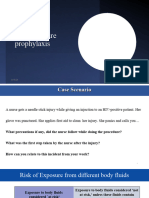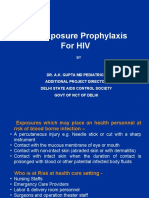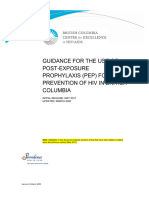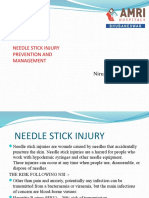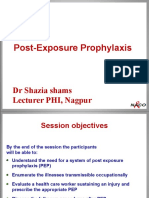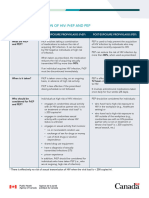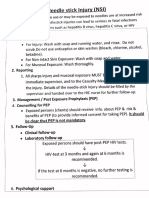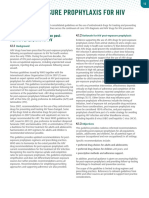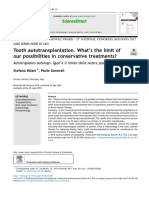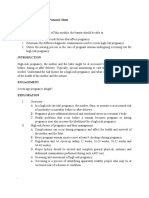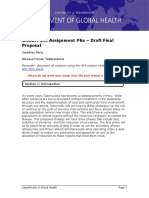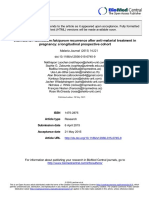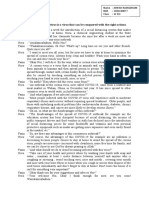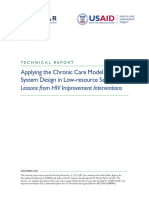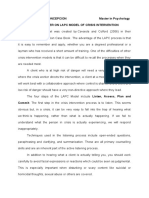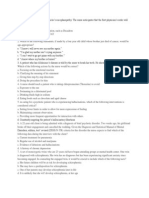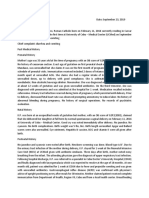0% found this document useful (0 votes)
187 views2 pagesNPEP Procedure Flowchart Template
The document provides guidelines for managing potential exposure to HIV in emergency departments, including assessing eligibility for non-occupational post-exposure prophylaxis (NPEP) based on risk and within 72 hours of exposure. It references national guidelines for initiating NPEP and includes algorithms for triaging patients and prescribing starter packs along with follow-up care and referrals. Risk assessment involves determining if the exposure was high risk, the source was known to be or likely HIV positive, and treatment was sought within 72 hours.
Uploaded by
dedekfridayCopyright
© © All Rights Reserved
We take content rights seriously. If you suspect this is your content, claim it here.
Available Formats
Download as DOC, PDF, TXT or read online on Scribd
0% found this document useful (0 votes)
187 views2 pagesNPEP Procedure Flowchart Template
The document provides guidelines for managing potential exposure to HIV in emergency departments, including assessing eligibility for non-occupational post-exposure prophylaxis (NPEP) based on risk and within 72 hours of exposure. It references national guidelines for initiating NPEP and includes algorithms for triaging patients and prescribing starter packs along with follow-up care and referrals. Risk assessment involves determining if the exposure was high risk, the source was known to be or likely HIV positive, and treatment was sought within 72 hours.
Uploaded by
dedekfridayCopyright
© © All Rights Reserved
We take content rights seriously. If you suspect this is your content, claim it here.
Available Formats
Download as DOC, PDF, TXT or read online on Scribd
/ 2
